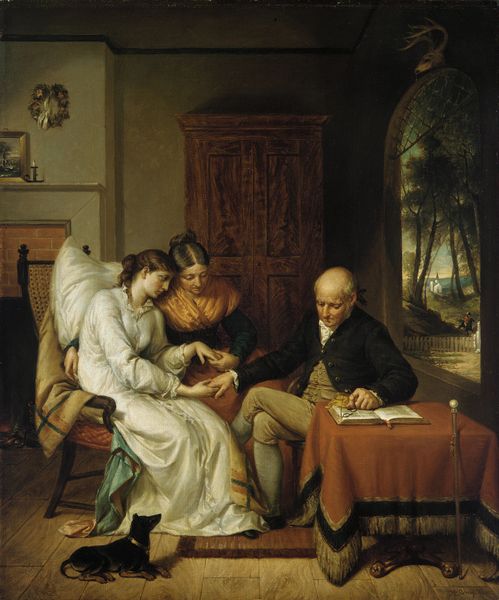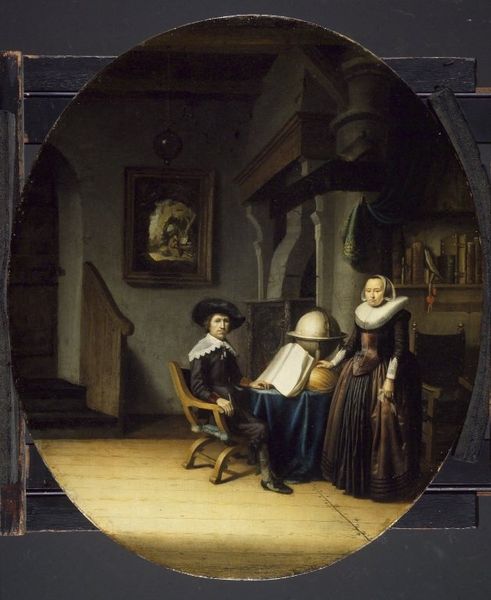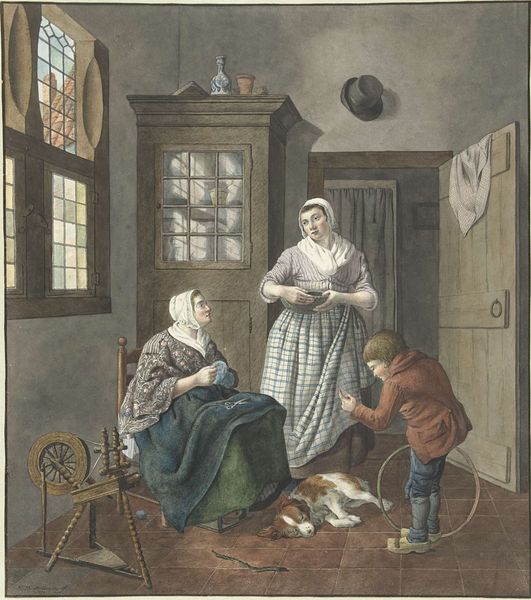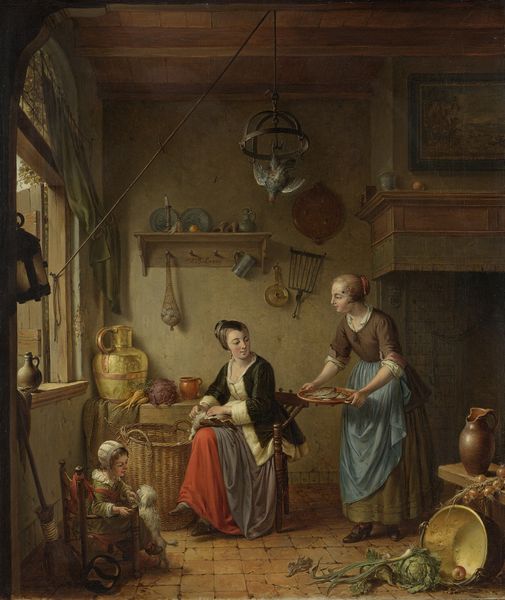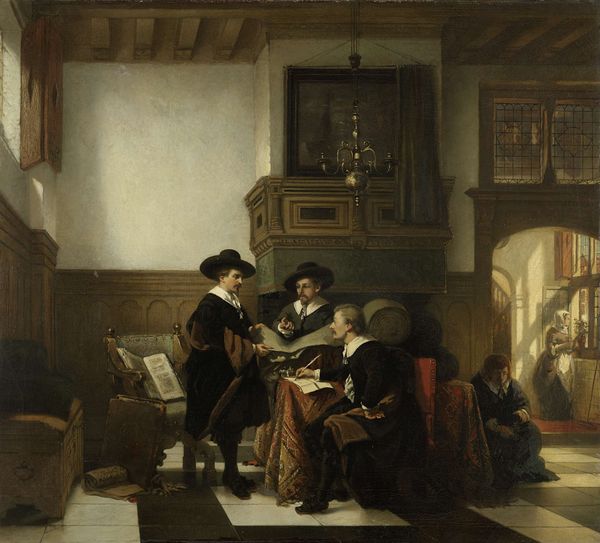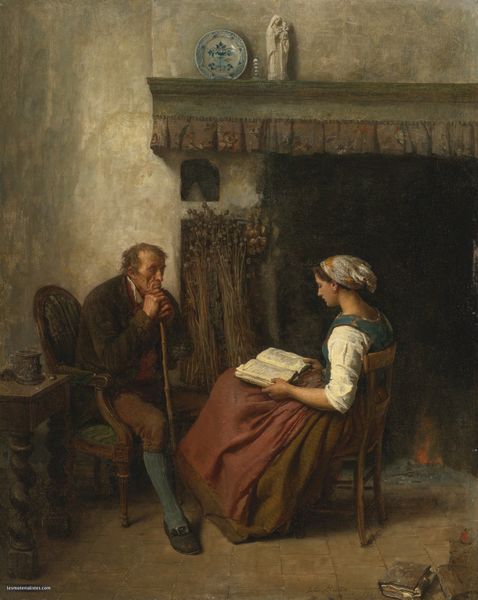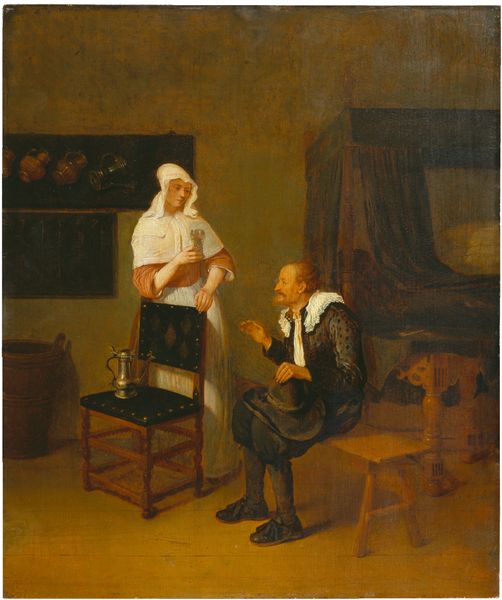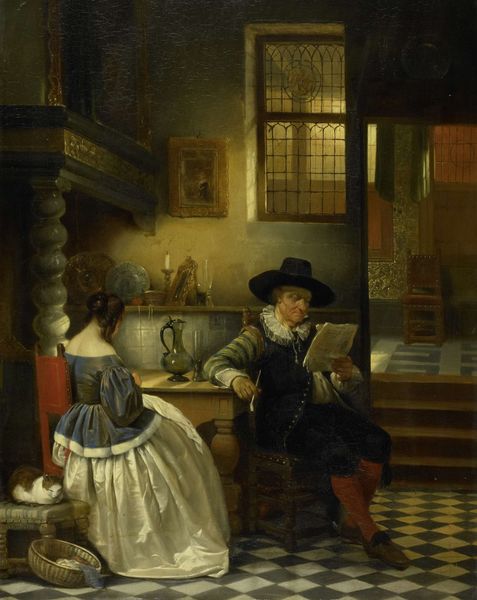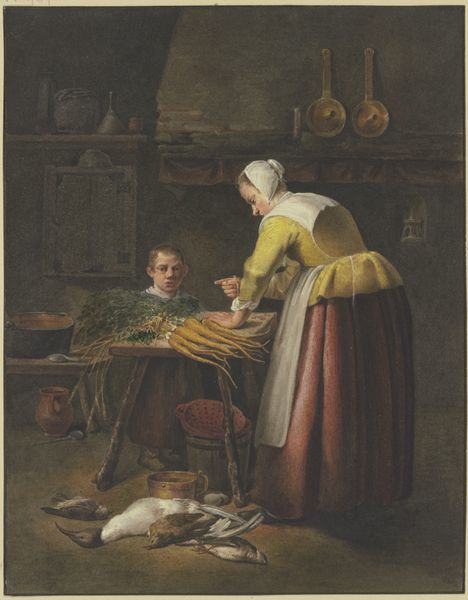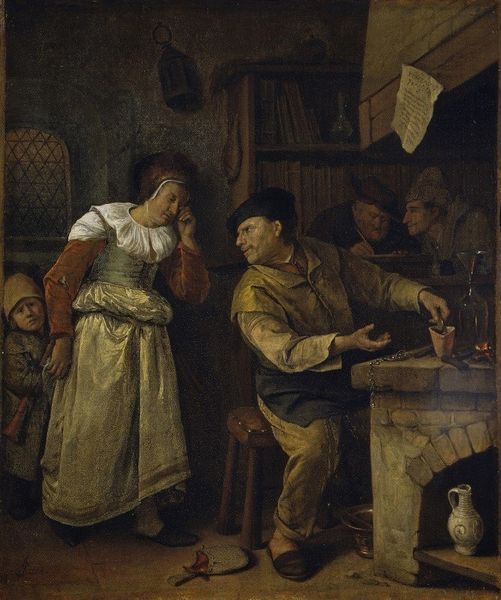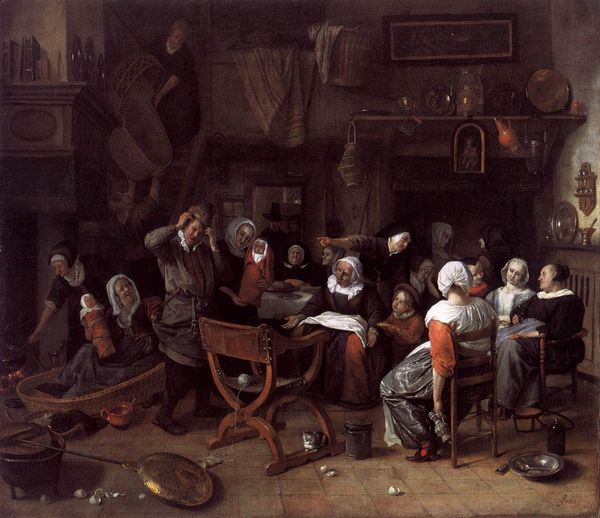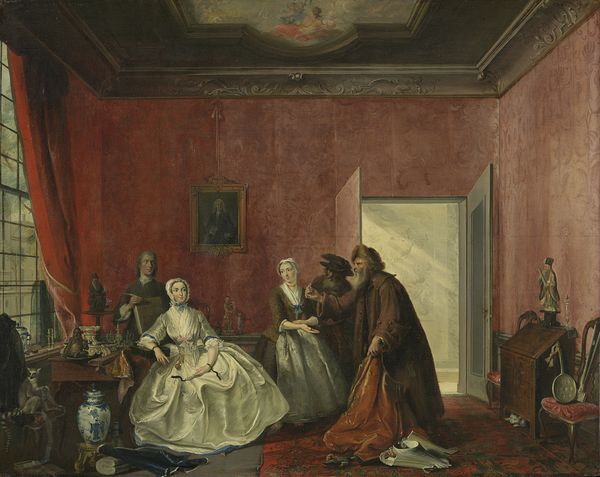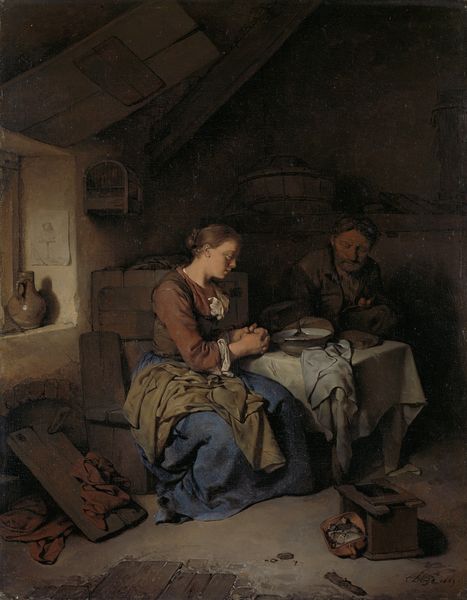
Portrait of Michiel Comans (1614-1687), calligrapher, etcher, painter and schoolmaster, with his third wife Elisabeth van der Mersche 1669
0:00
0:00
michielvanmusscher
Rijksmuseum
drawing, painting, print, etching, oil-paint
#
portrait
#
drawing
#
self-portrait
#
baroque
#
dutch-golden-age
#
painting
# print
#
etching
#
oil-paint
#
genre-painting
Dimensions: height 71 cm, width 63 cm, depth 8 cm
Copyright: Rijks Museum: Open Domain
Curator: This is Michiel van Musscher's "Portrait of Michiel Comans with his third wife, Elisabeth van der Mersche," painted in 1669. It currently resides in the Rijksmuseum. Editor: It's a striking image, immediately evoking a sense of domesticity, but almost a staged domesticity. The way they're positioned feels incredibly deliberate. Curator: Indeed. The composition, rendered in oil on canvas, positions Michiel Comans, the calligrapher, painter, and schoolmaster, front and center, holding his tools and a scroll, ostensibly showing off his artistry. It showcases the hallmarks of Dutch Golden Age portraiture. Editor: Absolutely, but considering his profession, doesn't this representation, even in its time, somewhat blur class boundaries? It isn't solely a display of status, but a display of vocation intersecting with bourgeois values. It places art as work, in the setting of the home, which is an interesting perspective to represent as art. Curator: Precisely. Van Musscher masterfully manipulates light and shadow, directing our gaze to the figures' faces and the meticulously detailed objects surrounding them, while considering a Baroque approach of creating complex interior scenes with many small details and elements. The use of color, especially in Elisabeth’s dress, the subtle pinks and whites in the background’s artwork, emphasizes the painting's formal qualities. Editor: I see that, but I'm more struck by Elisabeth’s somewhat reserved gaze and the very presence of his third wife, whose identity offers its own narrative layer. The intimacy here seems carefully constructed, perhaps alluding to familial legacy or simply celebrating the sitter's marital success. The inclusion of objects, the scattered papers, and the dog, these hint at something deeply personal and culturally contextual. Curator: True, but structurally, these objects balance the composition and anchor our eye within the space. They help give it a formal completeness that is independent of any personal context we impose on it. Editor: I think in the context of gender dynamics and portraiture of this era, even those formal choices reflect a very specific reality, one in which Elisabeth is both present and somewhat passive in representing Comans' achievement. Curator: I'll consider your insights on how social structures inform such aesthetic choices. I'm interested now in re-evaluating its impact based on this reading. Editor: And I'm glad to know more about the meticulous formal structuring—it underscores the depth of how we view art through layered perspectives.
Comments
No comments
Be the first to comment and join the conversation on the ultimate creative platform.
